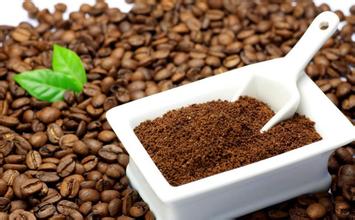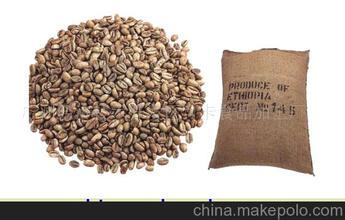Characteristics and Flavor Story of Sumatra Coffee beans in Indonesia
Description of the characteristics and flavor of Sumatra coffee beans in Indonesia
Sunda Hejo processing plant a total of 29 beans, of which only two coffee is the traditional wet planing method, a large part of the treatment of these 29 beans is Costa Rican processing technology. For varieties planted in cooperatives, all kinds of advanced treatment methods are adopted: finer control of each link of whole water washing, comparative experiment of dry fermentation and wet fermentation, strict control of fermentation time, drying time in drying shed and honey treatment.
Although Typica Gulali has been introduced and planted for only 3-5 years and has not yet been officially mass-produced, after testing the three treatments of this coffee (full wash,semi wash,honey process), we get a surprisingly consistent flavor: ginger, jasmine, honey and toffee. These flavors are the flavor properties of Rosa coffee a few years ago, and this local original Typica is indeed genetically linked to Rosa, which itself was introduced from Ethiopia.
Test the other coffee in the cup is Yellow Caturra, the colder this coffee is, the more pleasant it will be. At the beginning of the first impression is milk, a strong sense of sweetness, with lemon, citrus sour, temperature drop, strong tea plum and flower aroma. It's a complete combination of Kenyan coffee and Ethiopian coffee.
The charm of Indonesian coffee lies in its diversity of varieties and processing methods. In addition to marking Mandheling or Mandheling Grade 1, more growers and exporters will be willing to mark "Tim-Tim", "Ateng", "Typica" and so on on the variety column. More people are willing to explore more treatment methods besides the wet planing method "wet hull". This is Indonesian coffee today.
The topography of Sumatra is long and narrow. The topography of Sumatra is mainly from northwest to southeast of the island's Bali Mountains Barisan Mountains and the eastern lowlands. The mountains stretch, with more than 90 volcanoes and many volcanic lakes, volcanoes provide fertile soil suitable for coffee growth. For the tropical rain forest climate, high temperature and rainy all the year round.
Sumatra is the largest producer of Indonesian coffee, and well-known coffee-growing areas are mainly concentrated in the northern mountains, including Aceh in the northernmost province of Aceh and Sumatera Utara in North Sumatra. Including the well-known Mantenin Mandheling, Lin Dong Lintong, Jiayushan Gayo Mountain.
The name of Mandheling coffee is said to come from the local people, mandailing. The producing areas mostly point to the mountains in the north of Lake dopa, and the specific producing areas need to be verified.
Lintong coffee comes from the foothills around Lake Lake Toba in North Sumatra, Sumatra's largest volcanic lake, and its name comes from the small town called lintong in the southwest of Lake dopa.
Gayo mountain Coffee from Takengon, Takangong, Aceh Province and the mountains around Lake Lake Tawar.
Medan Medan and Padang Padang are important cities involved in coffee. They are the capital of North Sumatra and West Sumatra respectively, and they are also the most densely populated areas in Sumatra. The former is an important distribution center for Sumatra coffee exports, while the latter is also a well-known coffee production around, such as Ankola.
Coffee from Sumatra includes Arabica and Robusta, which is usually grown at high altitudes in the mountains, while robusta is grown in the lowlands. Coffee processing is famous for the traditional "wet planing", Giling Basah,wet-hulled, which is partly due to the local humid climate.

Important Notice :
前街咖啡 FrontStreet Coffee has moved to new addredd:
FrontStreet Coffee Address: 315,Donghua East Road,GuangZhou
Tel:020 38364473
- Prev

Description of taste and flavor of coffee beans treated by sun and water washing introduction to the origin of grinding scale varieties
Description of taste and flavor of coffee beans treated by sun and water washing varieties introduce the use of water washing and fermentation to remove peel, pulp and mucous membrane, and farms that use water washing must build washing ponds and be able to introduce an endless supply of live water. During the treatment, the mellow beans are put into the pool and passed back and forth, using the friction of the beans and the power of running water to make the coffee beans.
- Next

What kind of wood is the hand grinder? which is the better brand recommendation?
What kind of wood is the hand grinder? which is better? brand recommendation 1. The sharpening knife is made of ceramic material with low calorific value to ensure that the aroma of coffee will not be lost. Equipped with cork and silicone sealing ring, ground coffee powder can be sealed and preserved in bean cans. 3. Sealed bottles are made of HARIO glass, not ordinary plastic or acrylic, with good quality. 4. Add silicon to the bottom
Related
- Guji coffee producing area of Guji, Ethiopia: Humbela, Shakiso, Wulaga
- What is the most expensive variety of Qiloso in BOP multi-variety group?
- How to store the coffee beans bought home?
- Why are Yemeni coffee beans so rare now?
- Ethiopian Sidamo all Red Fruit Sun Sun Santa Vini Coffee beans
- SOE is mostly sour? What does it mean? Is it a single bean? what's the difference between it and Italian blending?
- Is Italian coffee beans suitable for making hand-brewed coffee?
- How to choose coffee beans when making cold coffee? What kind of coffee beans are suitable for making cold coffee?
- Just entered the pit to make coffee, what kind of coffee beans should be chosen?
- Can only Japan buy real Blue Mountain Coffee? What are authentic Jamaican Blue Mountain coffee beans?

